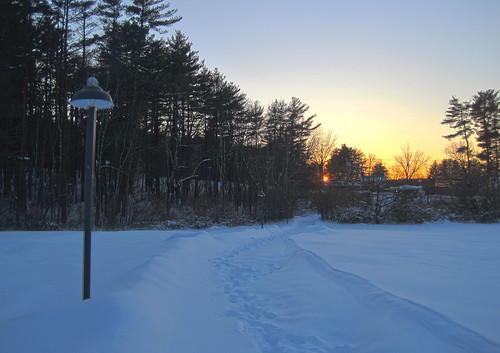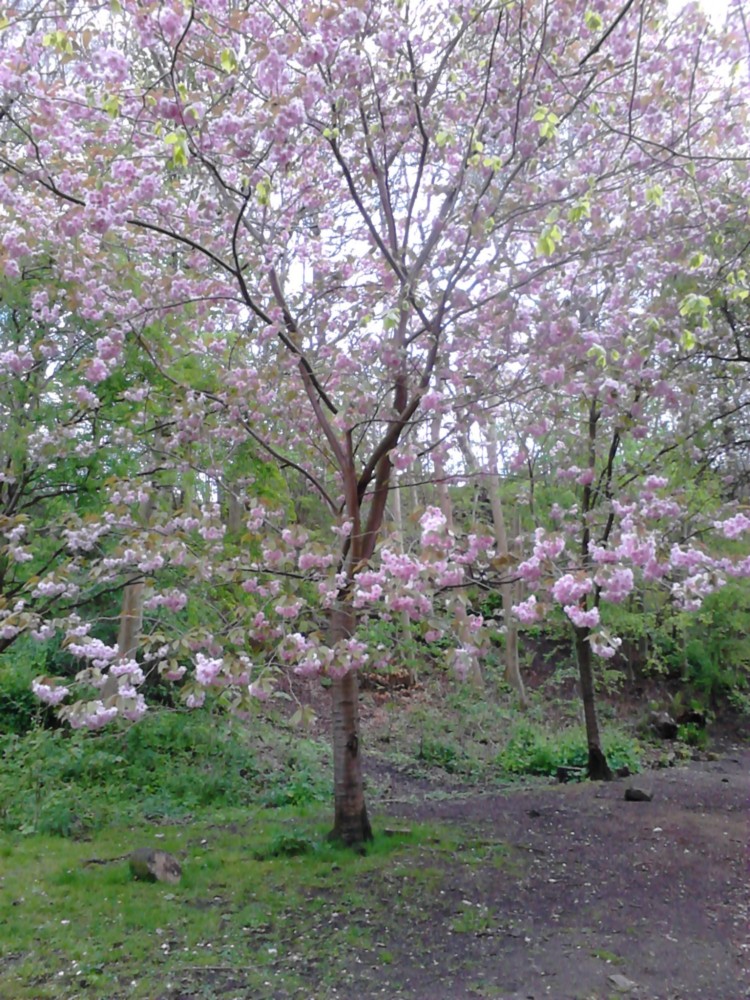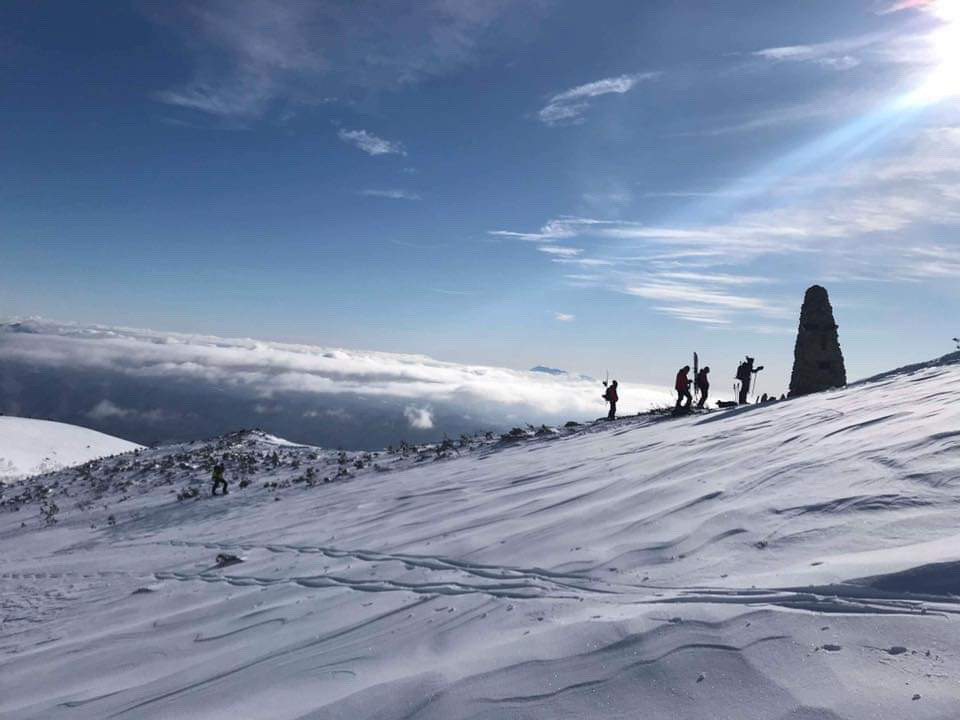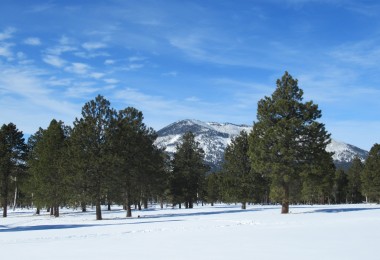Are there really dozens of terms for ‘snow’ in the Inuit and Yupik languages? And if so, does it matter?
The Great Eskimo Vocabulary Hoax
In 1986 Dr. Laura Martin of Cleveland State University published an article entitled “‘Eskimo words for snow’: a case study in the genesis and decay of an anthropological example,” the gist of which is that a statement by anthropological founding father Franz Boas (1911, pp. 25–26) has through the years transformed into an oft-repeated received truth that “Eskimos have at least 100 words for ‘snow’!” Dr. Geoffrey K. Pullum, then of UC-Santa Cruz, did a pithy rewrite of Martin’s paper for a more general audience entitled “The Great Eskimo Vocabulary Hoax.” Martin’s and Pullum’s points regarding the fact that uncritical repetition is more at home in lecture halls and in peer-reviewed publications than professional academics may like to think is well taken and beyond question. More questionable is Pullum’s contention that Inuit and Yupik vocabulary related to frozen precipitation compares in breadth with that of the English lexicon.
Both Inuit and Yupik form words by a process known as agglutination, or the “gluing together” of affixes onto a root. The use of affixes joined to a root is not foreign to speakers of English. Examples include {-er} in the word quicker and {-ly} in the word quickly, for example. The process is much more extensive in Inuit and Yupik than in English, however, offering the possibility of the joining of half a dozen or more affixes onto a single root.* The fairest answer to the question of what exactly is meant by ‘word’ in this context would probably be ‘root.’ The question of how many such words have been documented circles back around to the question of what is meant by ‘word.’ Drs. Igor Krupnik and Ludger Müller-Wille analyze the available data in such a way as to identify in the neighborhood of four dozen words for ‘snow’ in more than one language spoken by the Inuit. Pullum has retorted, in essence, that they do not know how to do linguistics.†
The taste-makers
But would it matter if we were able to arrive at a definitive and unproblematic answer informing us that Inuit and Yupik languages do in fact have dozens or more terms referring to snow? Linguist Guy Deutsher (2010, p. 6) clearly thinks not, as revealed by his posing of the question, “Does language reflect the culture of a society in any profound sense, beyond such trivia as the number of words it has for snow […]?” Pullum (1991, p. 166) even goes so far as to state that “actually, when you come to think of it, Eskimos aren’t that likely to be interested in snow. Snow in the traditional Eskimo hunter’s life must be a kind of constantly assumed background, like sand on the beach. And even beach bums have only one word for sand.”
Pullum’s statement seems to me to illustrate the common academic tendency to equate interestingness with non-obviousness. It also ignoring the truism that greater exposure to a thing results in an expansion of specialized vocabulary.‡ But Inuit snow terminology is merely further confirmation of this already well-established pattern, and this alone admittedly does not qualify as interesting in and of itself.
I would argue that the interestingness lies in the particularity of a vocabulary rather than in a more general tendency. As a personal anecdote, earlier this year a friend of mine who lives in Bali posted a Facebook status update about a just-moments-before earthquake. I commented, “A short-and-choppy or a big-and-wavy?” to which she replied, “A question from someone who clearly has known his share of earthquakes! [I lived in Guatemala once upon a time.] It was a short-and-choppy.” In the comment string we went on to discuss which of the two we found more frightening (the big-and-wavies by a mile).
When I first began snowshoeing I was amazed at how many different types of snow there really are. I had seen snow growing up in North Carolina but it was always gone within a couple of days. It was always wet and sticky, so the first time I traveled through a foot and a half of powder was a bit of a shock to me. As was the first time I experienced a climb atop the results of a few freeze-thaw cycles. That is all background to me now, but I certainly do believe that the lexicon of long time observers of frozen water—and as Krupnik points out, the Inuit and Yupik terms for ‘ice’ are even richer than those for ‘snow’—is worthy of my interest.
Notes
* Readers who speak or have studied German will be able to recognize a similar word formation process in that language.
† “What is a snow term? Some Eskimoan dialects use a derived word (kavisik) meaning ‘snow with a herring-scale pattern on it caused by re-freezing of rain pockmarks on fallen snow,’ but the root (not found in the Fortescue/Jacobson/Kaplan Comparative Eskimo Dictionary) appears to mean ‘herring.’ So we need criteria for deciding whether that would be counted as a snow word or a herring word[.]” A comparable example from English might be whether ‘corn’ would be counted as a snow word or as a corn word.
‡ For example, a grandchild will almost certainly know more words related to computing than will his or her grandparent.
Bibliography
Boas, Franz. “Introduction.” In Handbook of American Indian Languages. Part 1, edited by Franz Boas, 1–83. Bureau of American Ethnology Bulletin 40. Washington, D.C.: Government Printing Office, 1911.
Deutscher, Guy. Through the language glass: why the world looks different in other languages. New York: Metropolitan Books/Henry Holt and Co., 2010.
Krupnik, Igor. “‘How many Eskimo words for ice?’ Collecting Inuit sea ice terminologies in the International Polar Year 2007–2008.” “Geographies of Inuit sea ice use / Géographies de l’usage de la glace de mer par les Inuits,” ed., Claudio Aporta, D. R. Fraser Taylor, and Gita J. Laidler, special issue, The Canadian Geographer / Le Géographe canadien 55, no.1 (Spring / printemps 2011): 56–68. doi:10.1111/j.1541-0064.2010.00345.x.
Krupnik, Igor, and Ludger Müller-Wille. “Franz Boas and Inuktitut terminology for ice and snow: from the emergence of the field to the ‘Great Eskimo Vocabulary Hoax.’” In SIKU: knowing our ice: documenting Inuit sea ice knowledge and use, edited by Igor Krupnik, Claudio Aporta, Shari Gearheard, Gita J. Laidler, and Lene Kielsen Holm, 377–400. Dordrecht; London: Springer Netherlands, 2010. doi:10.1007/978-90-481-8587-0_16.
Martin, Laura. “‘Eskimo words for snow’: a case study in the genesis and decay of an anthropological example.” American Anthropologist, n.s. 88, no. 2 (June 1986): 418–23. doi:10.1525/aa.1986.88.2.02a00080.
Pullum, Geoffrey K. “The Great Eskimo Vocabulary Hoax.” In The Great Eskimo Vocabulary Hoax and other irrreverent essays on the study of language, 159–71. Chicago; London: University of Chicago Press, 1991.
Robson, David. “Chilly words: how Eskimos really say ‘snow’.” New Scientist 216, no. 2896–2897 (December 22–29, 2012): 72–73. doi:10.1016/S0262-4079(12)63275-8.










Leave a Comment